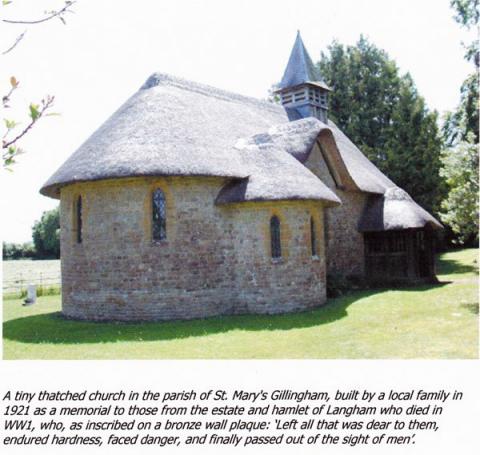Killed in action aged 30
Grave unknown
John Kenneth was born in Gillingham, Dorset, the youngest of the five children of Alfred Thomas Manger, a retired businessman, of French stock. His mother Elizabeth Ann (born Keevil), was Alfred’s second wife, and the family lived at Stock Hill House in Langham, Dorset.
John was educated at Wellington, playing cricket in their Eleven in the 1910, 1912 and 1913 seasons. On 11 November 1914 he was gazetted from the R.M.C. Sandhurst as a Second Lieutenant to the Northumberland Fusiliers, and served in France and Belgium. He was killed at Wieltje, near Ypres.
He is commemorated on Panel 8 and 12 at the Menin Gate, in the Books of Remembrance at The Fusiliers Museum, and The Abbot’s Tower, Alnwick Castle, and in the church of St. Mary, Gillingham, Dorset.

In 1890 Alfred Manger retired from banking and entrepreneurial activities in Hong Kong and London to live at Stock Hill House, Langham. It had long been his intention to build a church on his land, for the spiritual benefit of the employees on his estate, and for the hamlet of Langham. As European events developed, it evolved into a memorial to the sacrifices made by so many during the First World War in which he, like millions of other British families, lost close family members, namely his youngest son, Lt John Kenneth Manger, nephew George Bredon Kitson and son-in-law Capt Herbert Lancaster.
Manger died in 1917 before his plans could be put into effect but his widow, Elizabeth decided that he should be interred at the location where the church was to be erected. She died in 1919. Named after St George, patron saint of soldiers, the church was built in 1921 over their grave by their eldest son, Lt Col Charles Manger, who died in 1929. The finished church was dedicated to St. George on Trinity Sunday, 22nd May, 1921 by the Bishop of Salisbury and today (2011) holds occasional services.
A tiny thatched church in the parish of St. Mary's Gillingham, built by a local family in 1921 as a memorial to those from the estate and hamlet of Langham who died in WW1, who, as inscribed on a bronze wall plaque: ‘Left all that was dear to them, endured hardness, faced danger, and finally passed out of the sight of men’.

